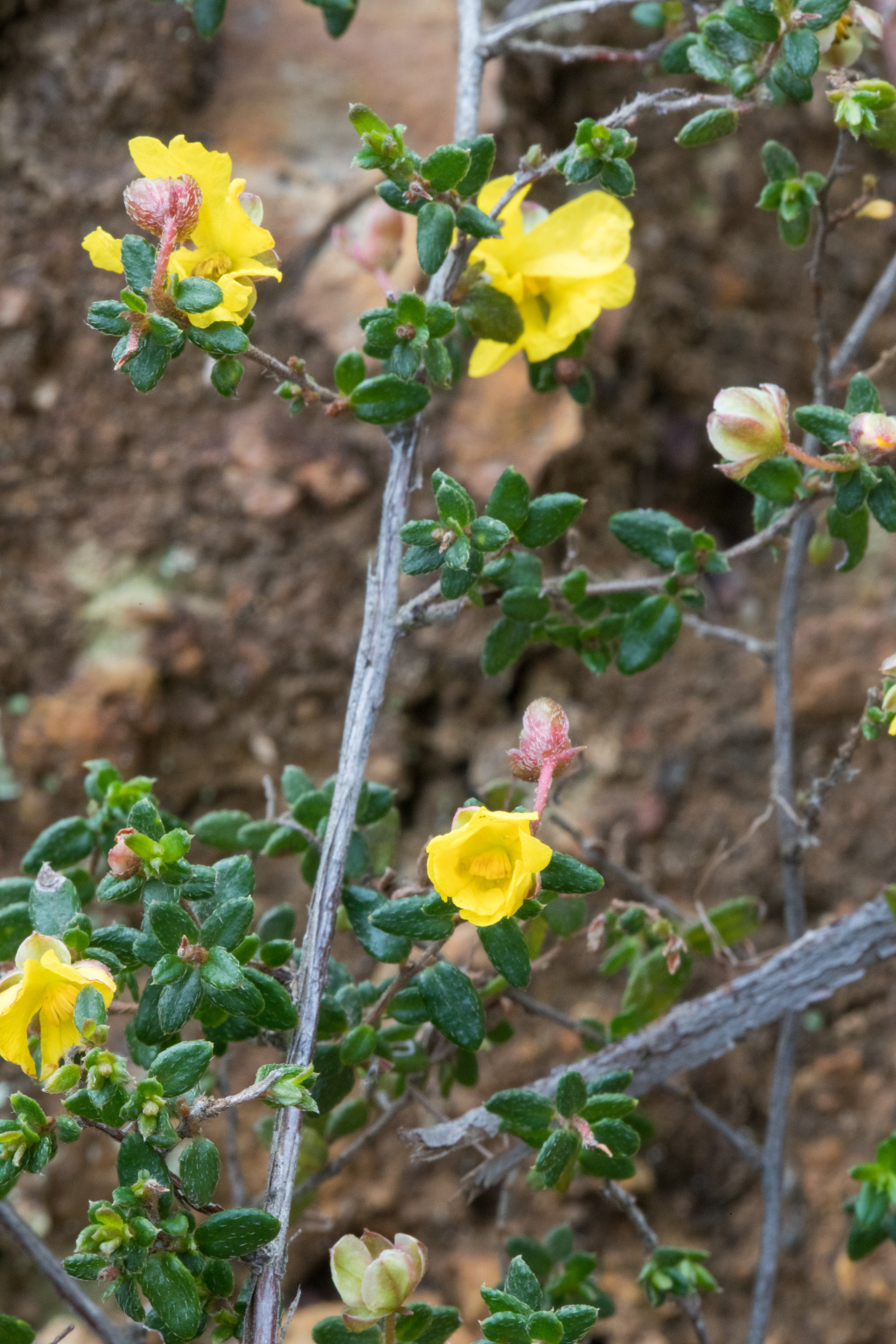Hibbertia appressa
ToelkenDecumbent or sometimes scrambling shrubs to 2 m high. Branches puberulent or glabrescent with tubercle-based, mainly simple hairs (sometimes hooked) over scattered stellate hairs. Leaves lanceolate-elliptic to obovate elliptic, elliptic, or oblong, (2.2–)3.5–9(–12) mm long, (0.9–)2.8–4.8(–6.3) mm wide, upper surface usually with scattered appressed simple hairs, rarely glabrescent; lower surface with sparse, simple hairs, erect and usually hooked on the lamina, longer and appressed along the midrib; petiole to 1 mm long, or rarely leaves sessile; apex obtuse or rounded, often with a short decurved mucro; margins narrowly recurved to revolute, usually distant from scarcely raised central vein. Flowers on peduncles 2.1–12.6 mm long, terminal, sometimes appearing axillary when on reduced short shoots or on main branches with continued axillary growth, subtended by a subulate bract 1.1–2.5 mm long; sepals 2.3–5.1 mm long, unequal, pubescent to puberulent; petals cuneate, 3.6–9.4 mm long, emarginate, bright yellow; stamens (7–)9–12; filaments usually connate for up to half their length; carpels 2, pilose. Flowers mostly Sep.–Dec.
GipP, OtP, WaP, EGL, EGU, WPro, HSF, HNF, OtR. Also Tas. Occurs in moist forests, riparian scrub etc. in southern Victoria (e.g. Otways, Beenak area, Mt Elizabeth).
Hibbertia appressa is closely allied to H. empetrifolia, from which it may be distinguished by its conspicuous simple hairs that are usually appressed on leaf adaxial surfaces and sepals, lack of stellate hairs on the central vein on the under surface of leaves and scarcity of stellate hairs on the calyx and branches. Most importantly, flowers have more than 9 stamens.
 Spinning
Spinning
